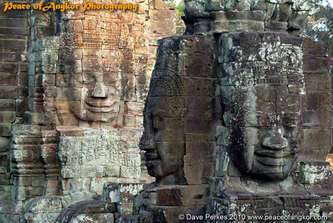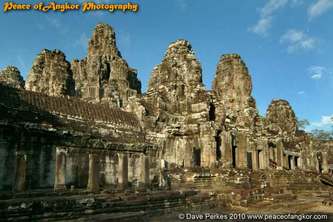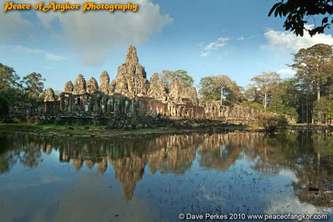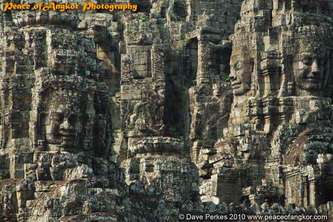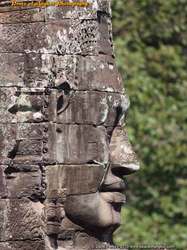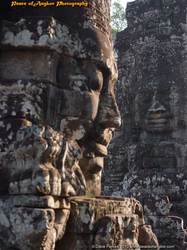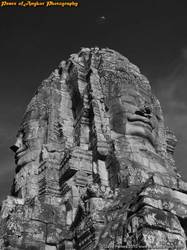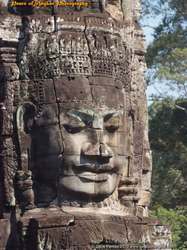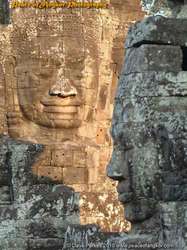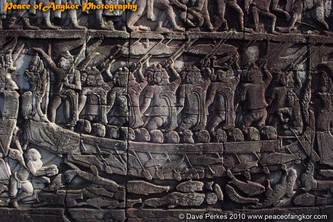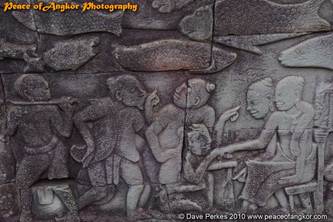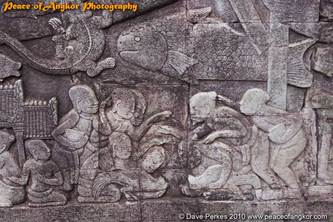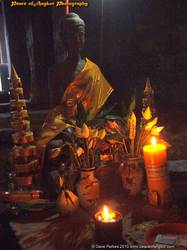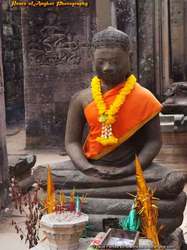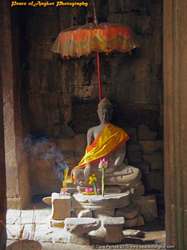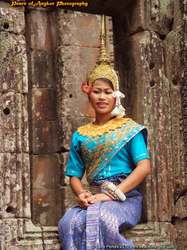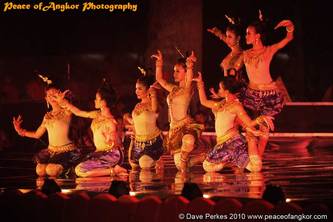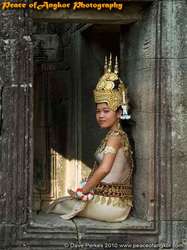PEACE OF ANGKOR PHOTOGRAPHY
THE BAYON
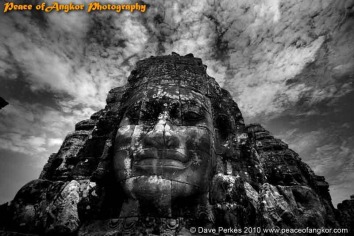
The Iconic faces of the Bayon have always been a symbol of Angkor.
Built toward the end of 12th Century, the Bayon was the centre piece of Jayavarman VII's city of Angkor Thom. It was the last of the great state temples dedicated to Buddha. With 52 four faced towers it is one of the most memorable of all the Angkor Monuments.
The 216 faces which remain on the temple's towers, are thought to representations of Jayavarman VII. Some experts believe that the faces belong to the Bodhisattva of compassion; Avalokitesvara or Lokesvara.
Built toward the end of 12th Century, the Bayon was the centre piece of Jayavarman VII's city of Angkor Thom. It was the last of the great state temples dedicated to Buddha. With 52 four faced towers it is one of the most memorable of all the Angkor Monuments.
The 216 faces which remain on the temple's towers, are thought to representations of Jayavarman VII. Some experts believe that the faces belong to the Bodhisattva of compassion; Avalokitesvara or Lokesvara.
You are in The Bayon - Angkor Wat - Angkor Thom - Bayon - Ta Prohm - Preah Khan - Eastern Temples
Faces of the Bayon
Bayon Bas reliefs
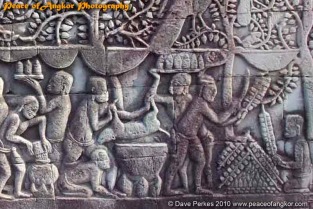
Domestic scenes on reliefs
The Bayon Style is present in many of the temples and the bas Relief's are of particular interest as many represent daily life 800 years ago.
A keen eyed observer, or visitor with temple guide will see fishing and farming scenes, gamblers, births and other scenes. The relief here shows scenes that are still going on today. Note the cooking and domestic scenes and the fish being smoked on the bottom right.
The reliefs below show a great naval battle between the Khmer and Chams and some domestic scenes and fish.
A keen eyed observer, or visitor with temple guide will see fishing and farming scenes, gamblers, births and other scenes. The relief here shows scenes that are still going on today. Note the cooking and domestic scenes and the fish being smoked on the bottom right.
The reliefs below show a great naval battle between the Khmer and Chams and some domestic scenes and fish.
Buddhas at the Bayon
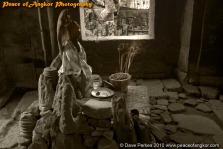
Bayon Buddha
In many corners of the Bayon and other temples one can see Buddha statues often lit by candles. Offerings of a few thousand riels are often left in bowls.
Visitors are often asked for donations to the Buddha and are given incense sticks to place in urns. This has been problematic in some areas It is up to your discretion whether you donate or not.
Visitors are often asked for donations to the Buddha and are given incense sticks to place in urns. This has been problematic in some areas It is up to your discretion whether you donate or not.
Restoration of the Bayon
The Bayon temple has been subject to major work by the Japanese Government Team for Safeguarding Angkor (JASA), UNESCO and the Apsara Authority. The work started in 2005 and is still continuing.
One of the major problems with the Bayon was that the drainage channels had been blocked. This caused water damage and subsidence to the structure. The southern library was also in very poor condition and near collapse. It needed to be partially dismantled and rebuilt. Major problems with the 41-metre high central tower were identified by extensive measurement and monitoring.
The structure could have become Cambodia's Leaning Tower of Pisa without the efforts of JASA. The NGO closed off the area for most of 2008 to carry out work. Visitors will notice measurement gauges and new timber supports to the underside of parts of the tower that recently reopened. The JASA Bayon exhibition hut near the north entrance provides information about the restoration.
The Bayon temple has been subject to major work by the Japanese Government Team for Safeguarding Angkor (JASA), UNESCO and the Apsara Authority. The work started in 2005 and is still continuing.
One of the major problems with the Bayon was that the drainage channels had been blocked. This caused water damage and subsidence to the structure. The southern library was also in very poor condition and near collapse. It needed to be partially dismantled and rebuilt. Major problems with the 41-metre high central tower were identified by extensive measurement and monitoring.
The structure could have become Cambodia's Leaning Tower of Pisa without the efforts of JASA. The NGO closed off the area for most of 2008 to carry out work. Visitors will notice measurement gauges and new timber supports to the underside of parts of the tower that recently reopened. The JASA Bayon exhibition hut near the north entrance provides information about the restoration.

